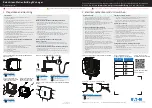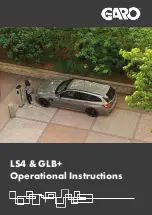
SNOW TIRES AND CHAINS
Snow tires must be the same size and grade as the tires you
currently have on your vehicle.
The tires on your vehicle have all weather treads to provide traction in
rain and snow. However, in some climates, you may need to use snow
tires and chains. If you need to use chains, it is recommended that steel
wheels (of the same size and specifications) be used, as chains may chip
aluminum wheels.
Follow these guidelines when using snow tires and chains:
•
Use only SAE class
⬙
S
⬙
cables or equivalent on the front axle for
P205/60R16 equipped vehicles. SAE class “S” chains or other
conventional link chains may cause damage to the vehicles wheel
house and/or body.
•
Do not install tire chains, cables, or optional traction devices on the
rear tires. This could cause damage to the vehicle’s wheel house or
body.
•
Do not use tire chains, cables, or optional traction devices with
optional P225/50R17 tires.
•
Install cable chains securely, verifying that the cables do not touch any
wiring, brake lines or fuel lines.
•
Drive cautiously. If you hear the cables rub or bang against your
vehicle, stop and re-tighten the cables. If this does not work, remove
the cables to prevent damage to your vehicle.
•
If possible, avoid fully loading your vehicle.
•
Remove the tire cables when they are no longer needed. Do not use
tire cables on dry roads.
•
The suspension insulation and bumpers will help prevent vehicle
damage. Do not remove these components from your vehicle when
using snow tires and chains.
•
Do not exceed 30 mph (48 km/h) with tire cables on your vehicle.
VEHICLE LOADING
This section will guide you in the proper loading of your vehicle to keep
your loaded vehicle weight within its design rating capability. Properly
loading your vehicle will provide maximum return of vehicle design
performance. Before loading your vehicle, familiarize yourself with the
2008 Milan
(mln)
Owners Guide (post-2002-fmt)
USA
(fus)
Tires, Wheels and Loading
180
















































